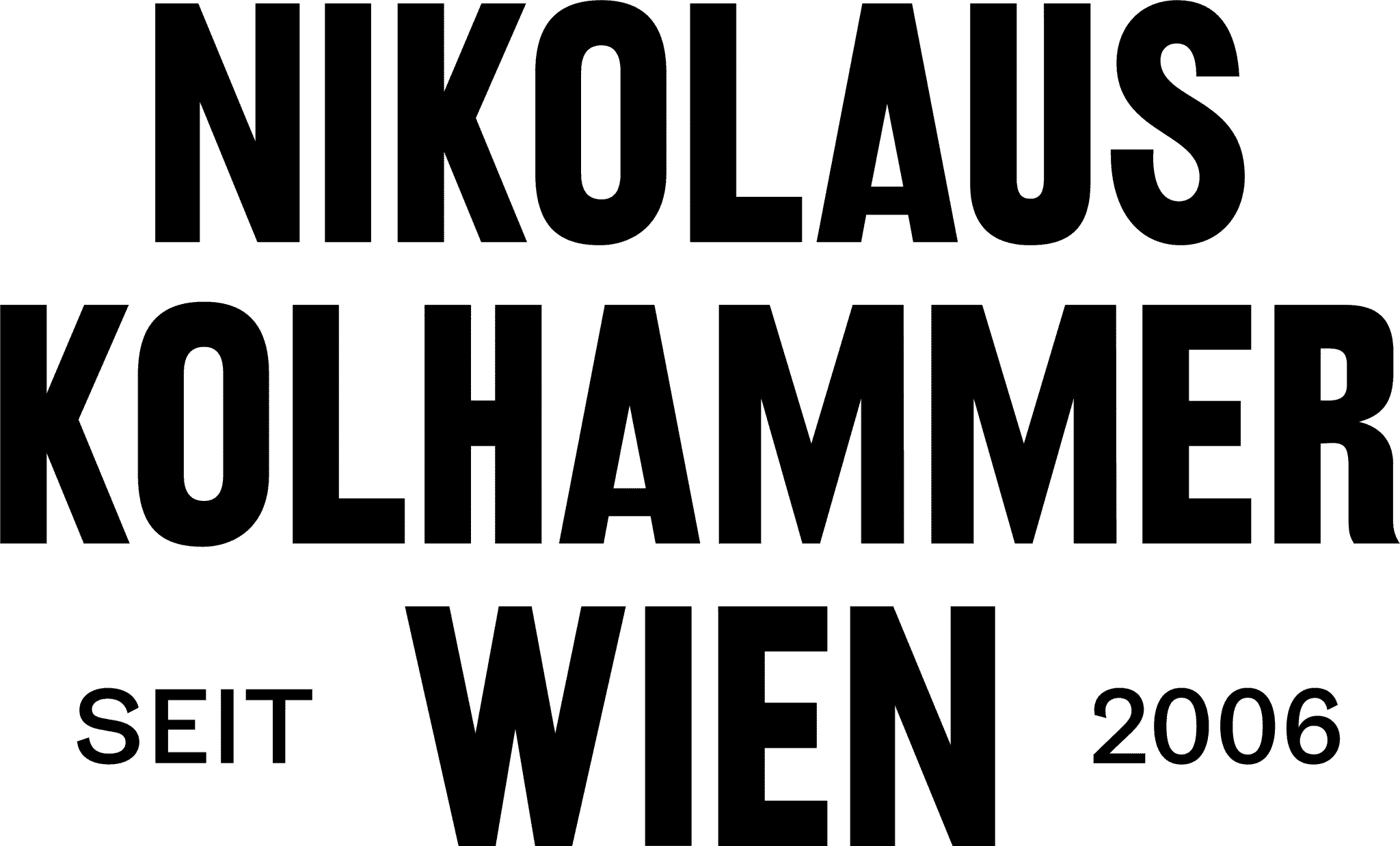Like his older brother Karl, Franz Hagenauer attended Franz Cizek’s highly sought-after youth art course in Vienna. When he began his regular studies, he had a clear idea of his future. Early on, he knew exactly what he wanted. On the application form under career aspirations, he wrote: Sculptor.
But it was still a long way until then and Franz Hagenauer had to overcome some hurdles. Franz was influenced by the Czech cubists, who often worked formally with prisms and pyramid vocabulary. Other influences during his student years were expressionism and kinetic art. During that time Franz worked a lot on plaster cuts, ceramics and chasing works. However, he was initially given only a “Satisfactory” grade by Cizek during his time at school.
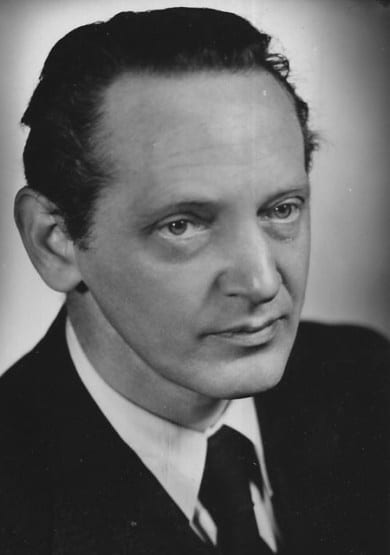
But his first great success was not far off. Further training followed under the sculptor Anton Hanak in Vienna. And in the school year 1922/ 23 he received a prize of one million crowns (today about 670 euros) from the Wiener Werkstätte in a competition for a brilliantly crafted sheet metal sculpture.
In his last year at school, he also took a course in belt-making, repoussé and chasing with Josef Hoffmann. Since Hoffmann immediately recognized his talent, he was not only taught by him but was also allowed to work for him. This was a great honor for the young sculptor. However, he attended this course for only a few weeks, as he was released from work for the Paris World Exhibition of 1925. For now, he had finished with his studies. After difficult beginnings, success and requests for work came flooding in. Nothing stood in the way of his dream of becoming a professional sculptor.
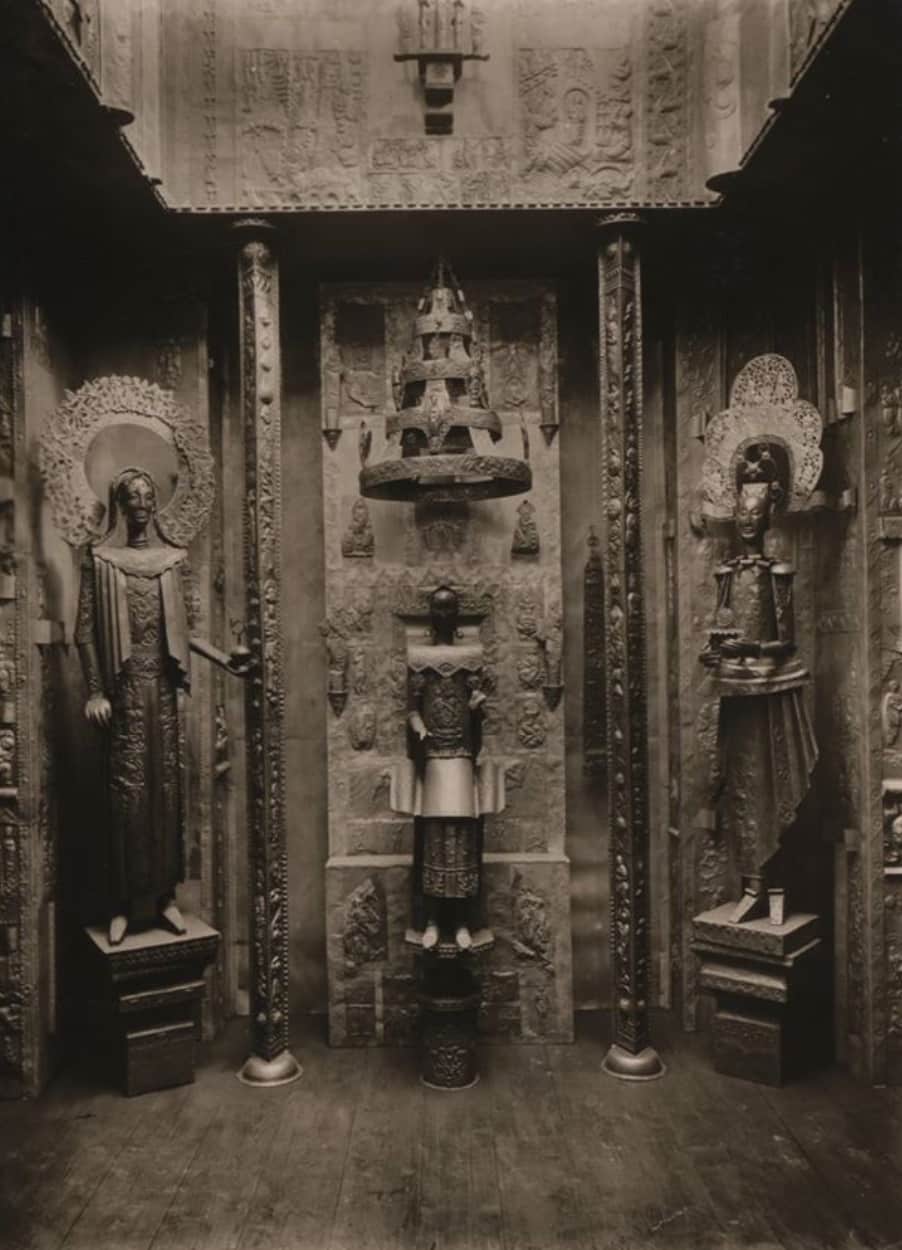
In the same year, however, Franz Hagenauer suffered a minor setback. An article about the Hagenauer workshop appeared in the trade magazine ‘Deutsche Kunst und Dekoration’, in which sheet metal sculptures by Franz were strongly criticized.

But this was immediately followed by praise for the exhibits at the Paris World Exhibition. Together with other students of Hanak, a “Room of Metals” was presented in Paris. This was described by critics as a sheet metal workshop, praised as a “cult room”, and was lauded as an example of passion of a professional way of working.
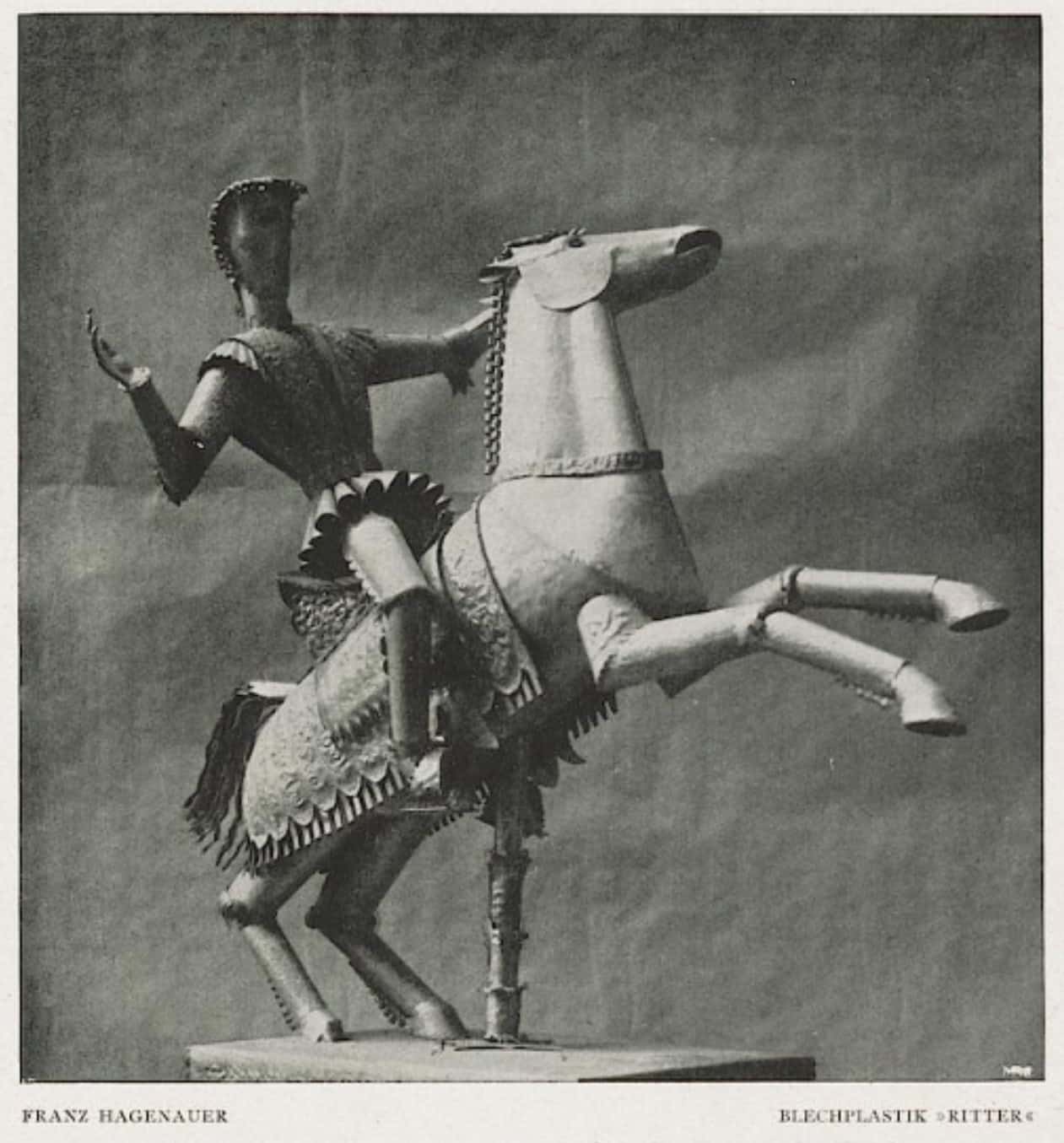
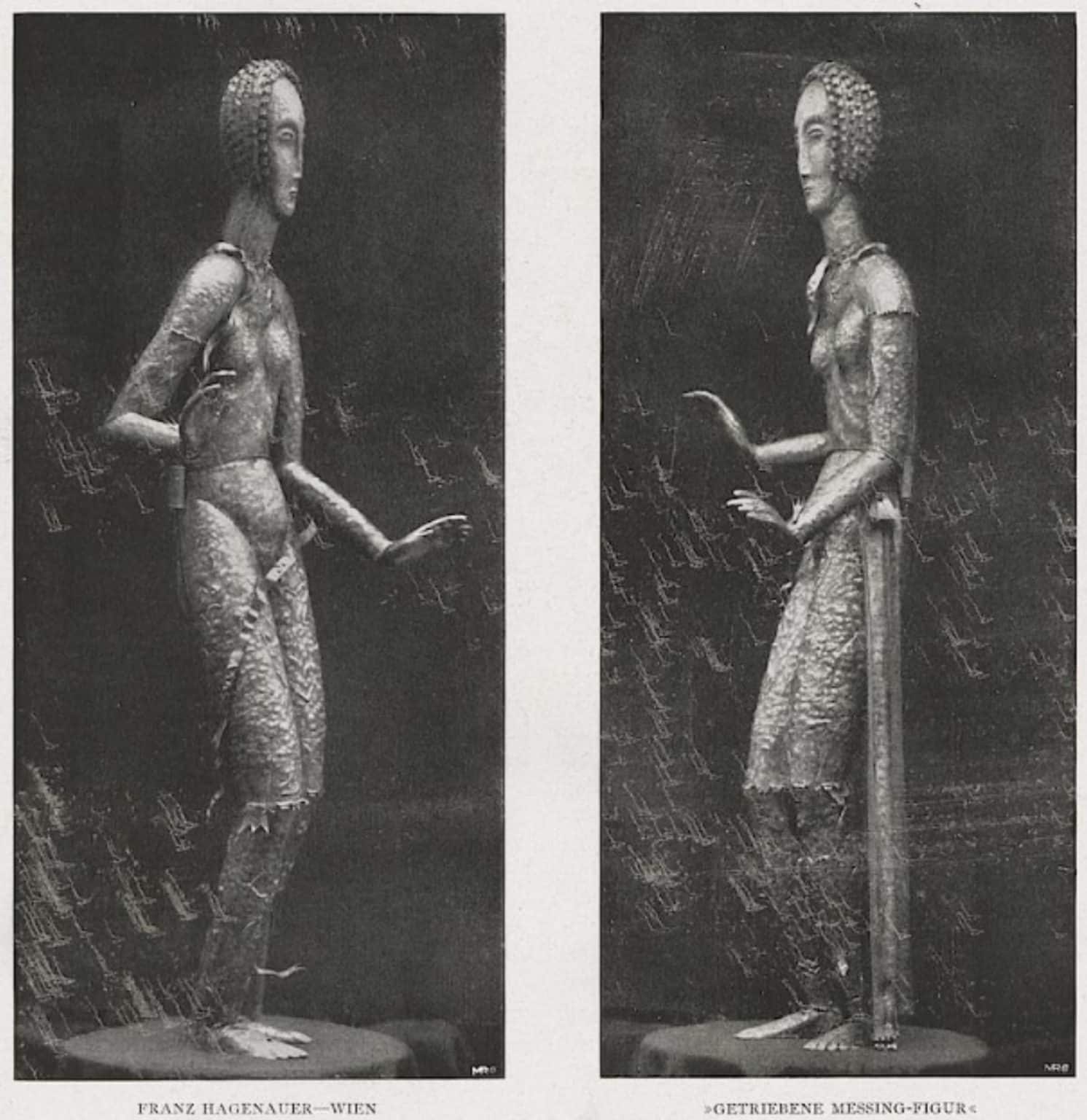
Success at the World Exhibition was followed by a period of work and further study for Franz. In the late 20’s Franz began working in the family business. There is uncertainty when exactly he began working at the Hagenauer workshop, as only a few pieces were explicitly signed with his signature mark. Moreover, while working for the family, he did not lose sight of his goal to become a sculptor. In 1928, he officially began training in the belt-making trade. This is why works by Franz Hagenauer for the Hagenauer Werkstätte from the late 1920s are very special.
One of these pieces of work from that time (around 1927 to 1930) is also currently offered in the Nikolaus Kolhammer Gallery. It is a brass bowl, cast brass, wrought, and chased. Figures in long robes are depicted. Their gestures, praying and praising, indicate Christian saints. On some of these figures, halos can also be seen. However, other figures are not to be overlooked in the bowl. One of them, for example, is a rider on horseback, which could also be the image of a Christian saint.

Floral elements, which are geometrically arranged, and stylized animals connect the different episodes of the sacred figures. It is fascinating how religious with more profane motifs are related to each other here. Benedictory figures, courtly horsemen, animals, and floral elements are combined to create a stylish overall image of an excellently crafted brass bowl.
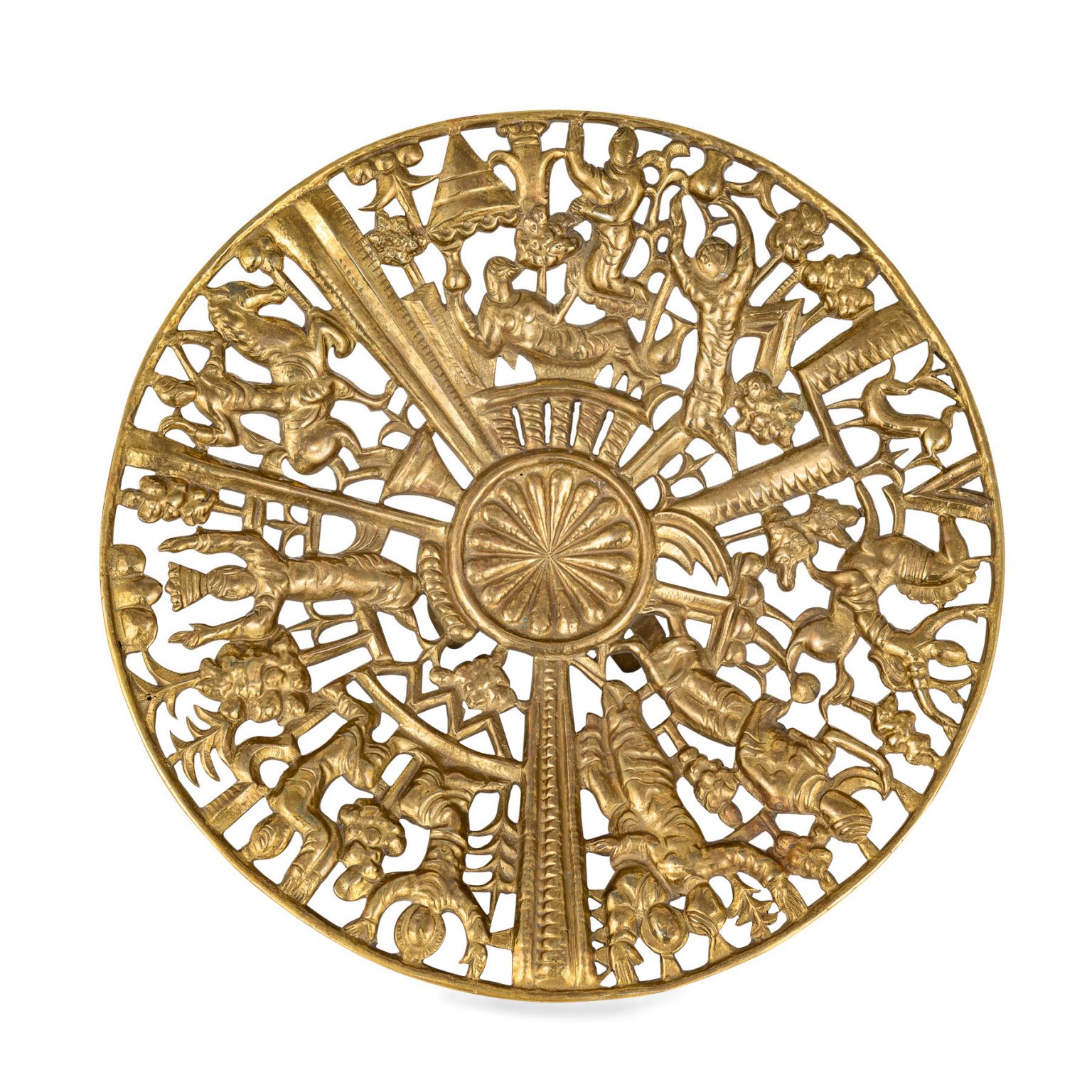
The inspiration for this bowl by Franz Hagenauer can be traced back to work for the 1925 Paris World Exhibition. As mentioned earlier, Franz exhibited pieces with other students of Franz Hanak in the “cult room”. Many of those works show patterns similar to the brass bowl, combining sacred scenes with secular motifs.

This brass bowl is an excellent testimony of a young, promising artist who, after hard work and minor setbacks, continued to focus on his goal and was able to apply what he had learned. The bowl is a testimony that Franz Hagenauer became a great sculptor.










